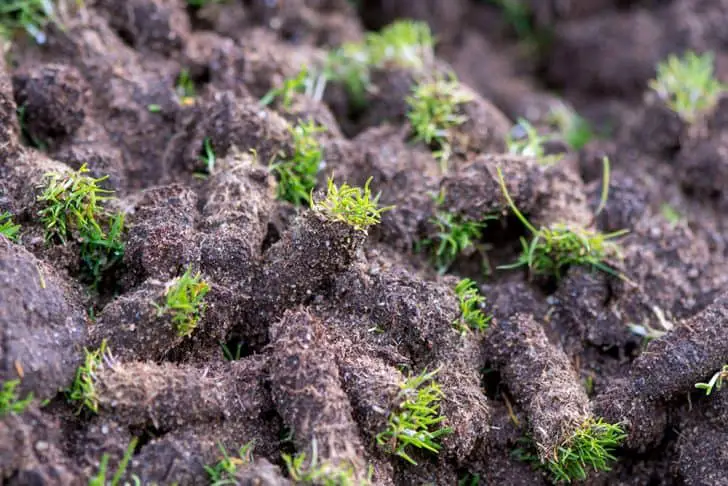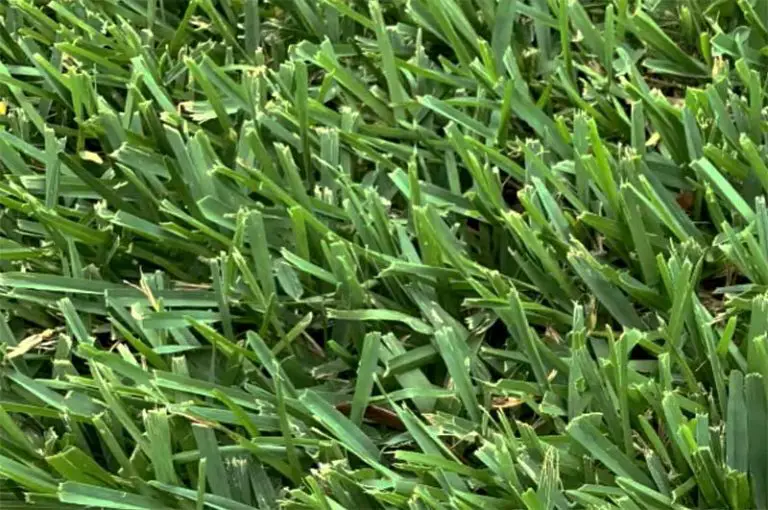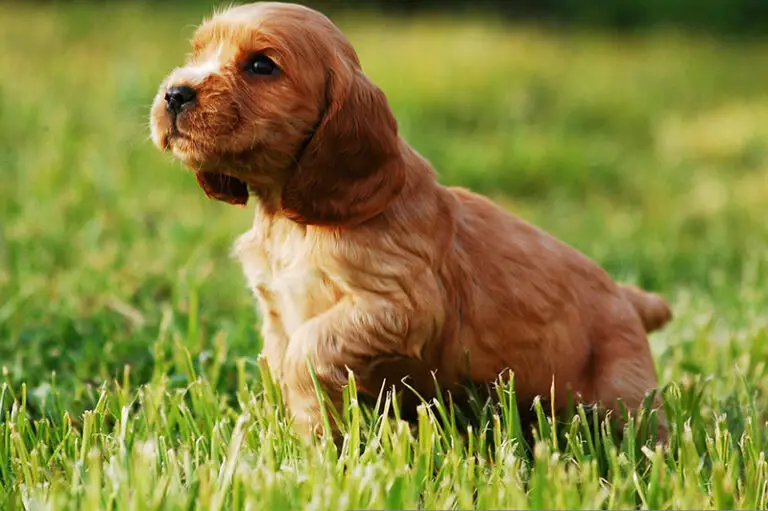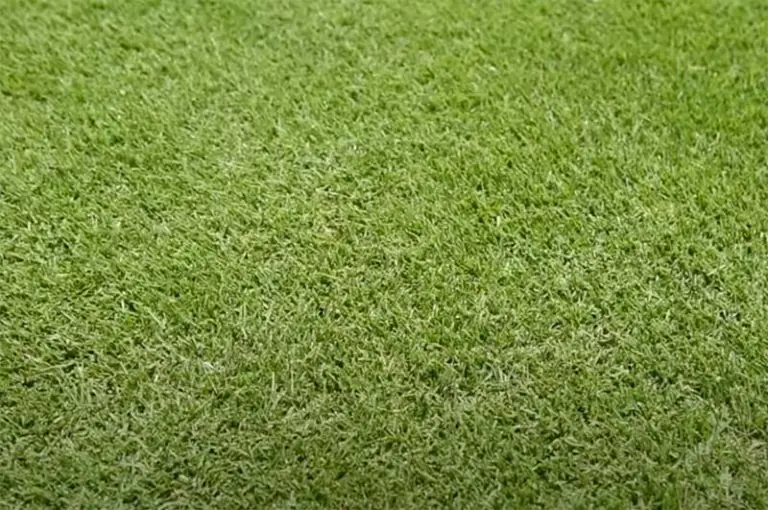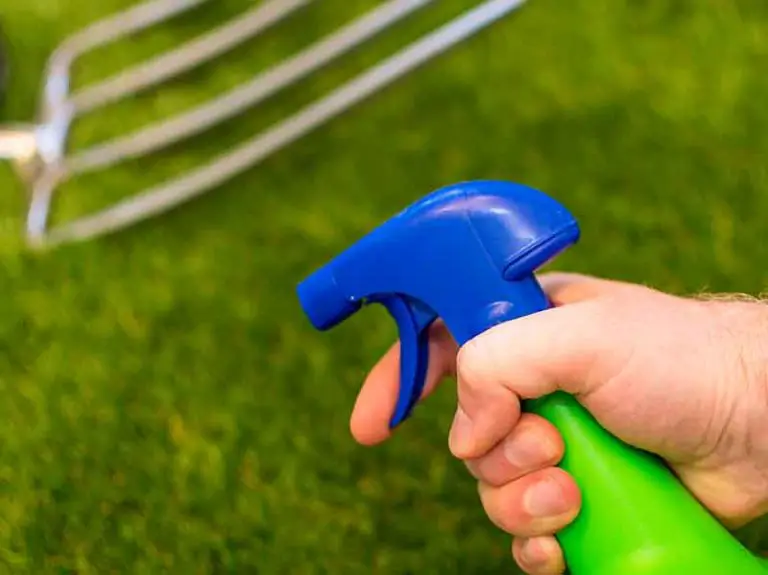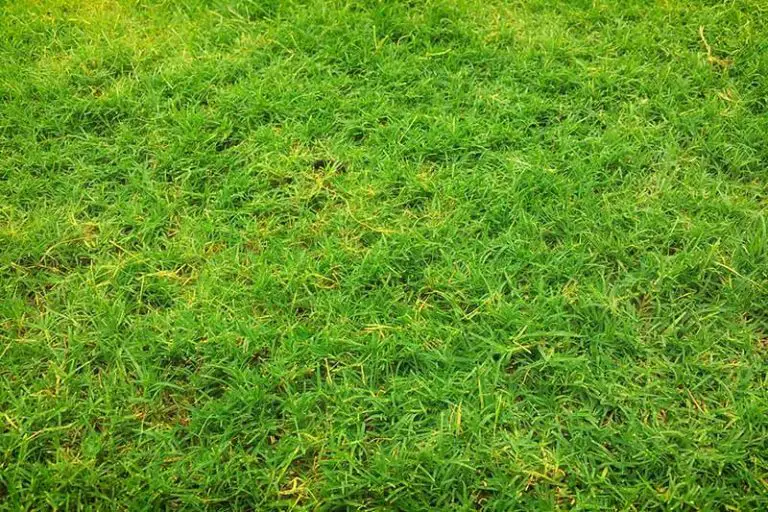Grow a Lush Lawn in High Traffic Areas
After a lot of wear and tear, your lawn will start to look thin, tired, and patchy in areas that receive high traffic. Whether it’s from people, pets, lawn equipment, or cars, any heavy usage will take a toll on grasses with a low tolerance for traffic. You should seed high-traffic lawns with a hardy grass type that will withstand damage from these sources.
The best grass seeds for high traffic areas include tall fescue, perennial ryegrass, Kentucky bluegrass, Bermuda grass, and zoysia grass. The type you choose for your lawn will primarily depend on the area in which you live; on top of this, you should also consider factors like the grass’ appearance, drought tolerance, and susceptibility to disease and pests.
Best Grass Seed for High Traffic Areas
1. Tall Fescue
For those in the northern regions of the US, tall fescue is the best grass seed for high traffic areas. Tall fescue is a cool-season grass type that has coarse, robust blades and grows deep roots. This grass is well-adapted to thrive in a range of conditions; a particular benefit of tall fescue is that it is also one of the most drought-resistant grass types.
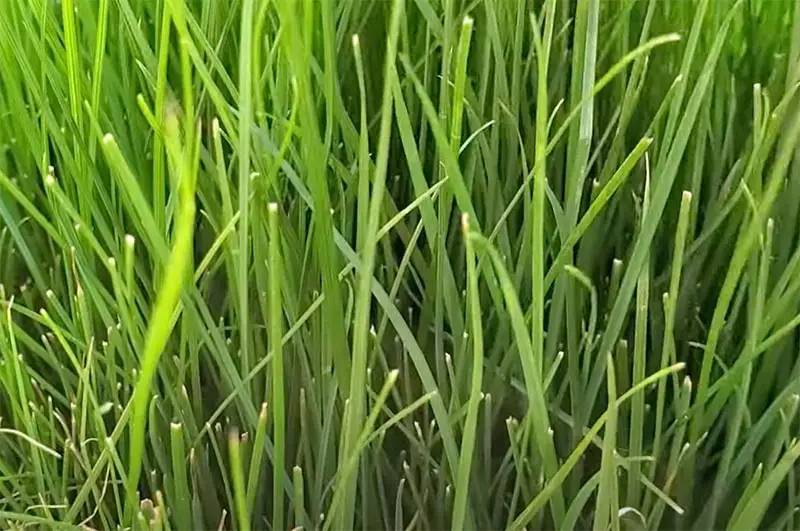
Tall fescue is generally hailed as a low-maintenance, highly resistant grass type. It can grow in soils with low nutrients, has a moderate tolerance for shade and drought, and a high tolerance for disease and pests. Even though this is a cool-season grass, it has the ability to stay green throughout summer with the right care.
In terms of its growth habit, tall fescue is a bunch-forming grass. This limits the grass’ ability to spread to fill bare spots of soil; when damage does occur, you’ll need to overseed the lawn to fix the damaged areas. With that said, tall fescue can tolerate high levels of traffic and stress before damage tends to occur. As an additional note, you will seldom have to dethatch tall fescue grass.
2. Perennial Ryegrass
Perennial ryegrass is a cool-season grass with fine, low-growing blades that are bright green in color. Like tall fescue, Perennial ryegrass has tough blades and grows an extensive root system, making it another excellent seed for high traffic areas.
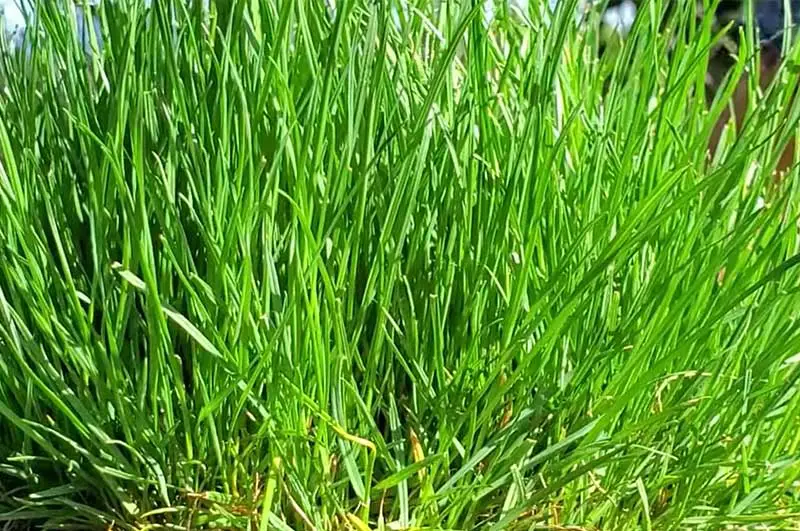
Perennial ryegrass is another low-maintenance grass type that will grow well in a range of conditions. It has a high tolerance to drought; extended periods of drought will cause perennial ryegrass to go dormant and turn brown, but it revives quickly when watered. However, this grass has low tolerance to shade, making it unsuitable for lawns that receive little sunlight. It also has a low tolerance to presets and disease; hot, humid conditions may cause gray leaf spot disease on this grass.
Perennial ryegrass is another bunch-forming grass type. You will therefore have to overseed the lawn to repair patches of damaged turf. This grass doesn’t produce much thatch, therefore you won’t need to dethatch it often.
3. Kentucky Bluegrass
Kentucky bluegrass is a cool-season grass type that has soft, smooth blades, varying in color from a blueish-green to emerald green. Although this grass’ root system is more shallow compared to tall fescue and perennial ryegrass, it grows thick, dense blades. These blades make the turf highly resistant to damage in high traffic areas.
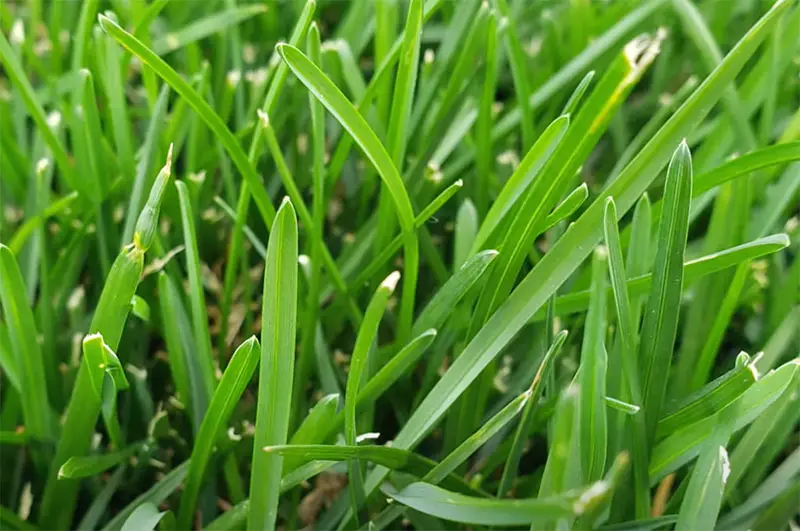
Kentucky bluegrass is typically more of a high-maintenance grass type. It won’t tolerate soil with low nutrients, but instead suffers from stunted growth and a condition called stripe rust. It will tolerate partial shade, but ideally requires sunlight for a minimum of 4 hours per day. In extended periods of drought, Kentucky bluegrass turns dormant. It has a high susceptibility to disease and pests. All of these characteristics are what make Kentucky bluegrass more high-maintenance; however, with the right care, this grass will produce a lush lawn that will withstand high levels of traffic.
Kentucky bluegrass grows using underground stems called rhizomes. This growth habit means that Kentucky bluegrass will spread to fill bare soil on its own. If damage occurs due to disease or pests, make sure to treat the issue before overseeding the affected patches. Compared to the previous two grasses, Kentucky bluegrass produces more thatch; you’ll need to dethatch the lawn at least every other year with this grass.
4. Bermudagrass
Bermuda grass is the best grass seed for high traffic areas if you live in a southern region of the US. Bermuda grass is a warm-season grass type with blades that range in color from blue-green to gray-green to dark green. It creates a highly durable lawn due to its aggressive growth habit and deep root systems.
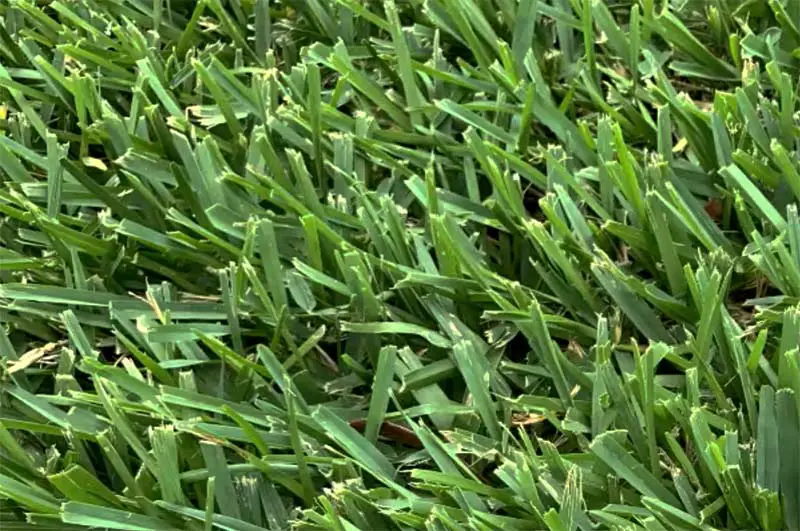
Bermuda grass has a moderate to high requirement for maintenance. This grass will require weekly mowing and monthly fertilization during the summer. It has a low tolerance for shade, preferring full sunlight throughout the day. In addition to its high traffic tolerance, Bermuda grass has a high drought tolerance; it will turn brown in extended periods of drought before greening back up when water is added. Similarly, Bermuda grass will turn brown during periods of cold weather.
Bermuda grass spreads using both overground stolons and underground rhizomes. It’s thanks to this growth habit that Bermuda grass makes such a hardy turfgrass; it will easily spread to bare spots of soil in the case that damage occurs. The downside of this aggressive growth habit is that Bermuda grass may spread to unwanted areas like nearby garden beds. You can keep Bermuda grass out of beds by installing lawn edging.
5. Zoysia Grass
Zoysia grass is a warm-season grass that varies in texture and color, typically having light to medium green blades. This grass is also a great choice for high-traffic areas due to its ability to form a thick dense lawn.
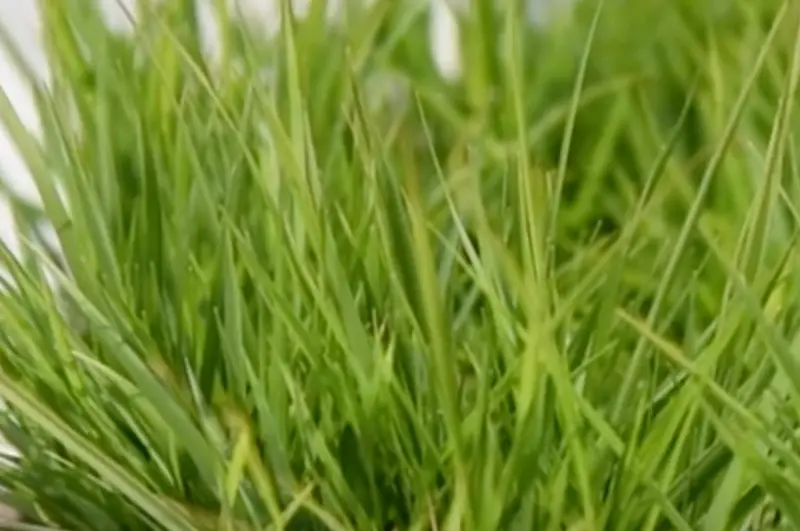
Zoysia grass needs a high level of maintenance to thrive, requiring frequent applications of fertilizer throughout its growing season. It is slightly more tolerant to shade than Bermuda grass, but prefers full sun and will thin in large overly shaded areas. A disadvantage of this grass is that it has low drought tolerance; it generally requires more water than other warm-season grasses, and will turn brown quickly in a drought. This grass is also highly vulnerable to pests and diseases compared to other warm-season grasses.
Like Bermuda grass, Zoysia grass spreads through stolons and rhizomes. Again, this gives the grass an excellent ability to spread to fill bare spots on the lawn. You’ll likely need to dethatch zoysia grass lawns every 1 to 2 years to combat thatch buildup.
Best Grass for High Traffic and Shade
For cool-season lawns, the best grass for high traffic and shade would be tall fescue. Although this grass prefers full sun, it will tolerate moderate amounts of shade in high traffic areas.
For warm-season lawns, the best grass seed for high traffic and shade is zoysia grass. Again, although this grass grows best in full sun, it will tolerate partially shaded areas of your lawn. You should opt for a fine-bladed variety of zoysia as these are typically more shade tolerant.
Best Grass for High Traffic and Sun
For cool-season lawns, the best grass for high traffic and sun is perennial ryegrass. This cool-season grass type has a high tolerance for drought. As we’ve previously explained, it will turn brown in periods of drought, but greens up quickly when it receives water.
For warm-season lawns, Bermuda grass is the best grass for high traffic and sun. This grass is well-adapted to thrive in high heat and full sunlight throughout the day.
Best Grass for High Traffic from Dogs
The best grass for high traffic from dogs include tall fescue, perennial ryegrass, Kentucky bluegrass, Bermuda grass, and zoysia grass. All of the aforementioned grass types possess the durability to withstand heavy usage from dogs.
How to Identify Damage from High Traffic
High traffic on the lawn will cause patches of your grass to turn yellow or brown before dying off completely. However, many other conditions can cause similar symptoms to appear on your lawn. You’ll need to rule out any other causes for your turf damage before you can determine whether traffic is the issue.
The signs of traffic damage include:
- Soil compaction
- Grass turning yellow or brown
- Flattened grass
- Grass with blade or root damage
- Grass that’s growing sparsely or thinning in areas
- Lawn is full of weeds
Many lawn diseases can cause damage that may appear similar to that of heavy traffic. The easiest way to distinguish between disease and traffic damage is to assess the appearance of the damaged areas; lawn diseases typically manifest as defined rings of discolored grass, while traffic damage appears more patchy. However, these two issues often go hand in hand as traffic damage leaves your lawn more susceptible to the development of disease. You may need to remedy both issues before your lawn recovers fully.
Another issue that can affect the health of your grass is thatch and compacted soil. If you already have a traffic-resistant grass type, your lawn may benefit from dethatching, aerating, or both, for the grass to thrive.
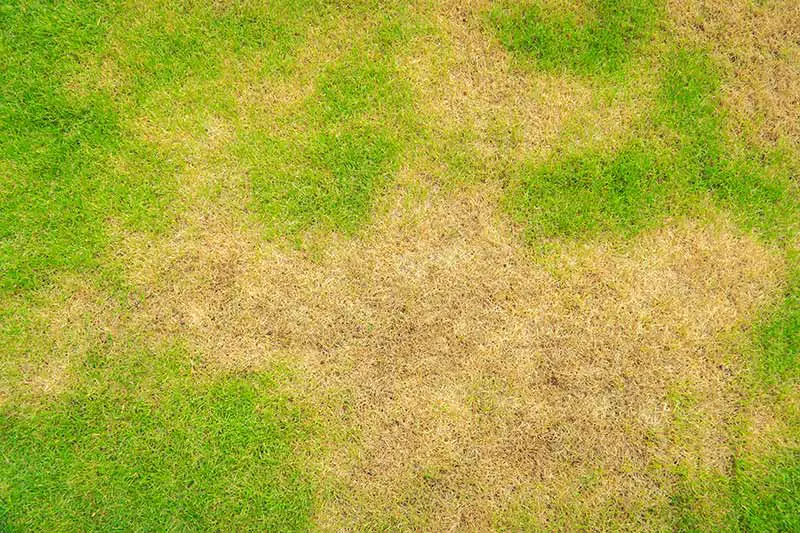
How to Repair Lawn Damage in High Traffic Areas
If you identify that areas of your grass have been damaged from traffic, you can repair the damage using the following steps.
1. Assess Extent of Damage
Look over your lawn and assess the level of damage it currently has. This is to determine whether you need to commit to a long-term repair job or a quick fix.
2. Identify Areas of High Traffic
While looking over your lawn, identify the areas that receive the most traffic. Consider the source of the damage; you may need to encourage pets or children to use other parts of the lawn to reduce concentrated patches of damage.
3. Overseed Bare Patches of Soil with High-Traffic Seed
Choose a high traffic grass seed compatible with your climate and the grass currently growing on your lawn. Overseed your lawn in the damaged areas, seeding at the correct time of year for your chosen seed. You can do this using a broadcast or drop spreader. To encourage the fast germination of your new seed, apply a starter fertilizer; you can fertilize before or after overseeding your grass.
4. Temporarily Keep People, Pets, and Vehicles Off Grass
Keep all people, pets, and cars off the grass to give it a chance to recover and to allow the new seed to germinate. It should only take about 1 month for your seed to finish germination. After this point, try to keep traffic on the lawn at a minimum while the new grass is still young.
5. Keep Up with Lawn Maintenance
To sustain the health of your grass and its traffic resistance, remember to keep up with the necessary lawn maintenance activities. Proper watering, mowing, and fertilization will all strengthen your lawn, improving its natural resistance to heavy traffic.

